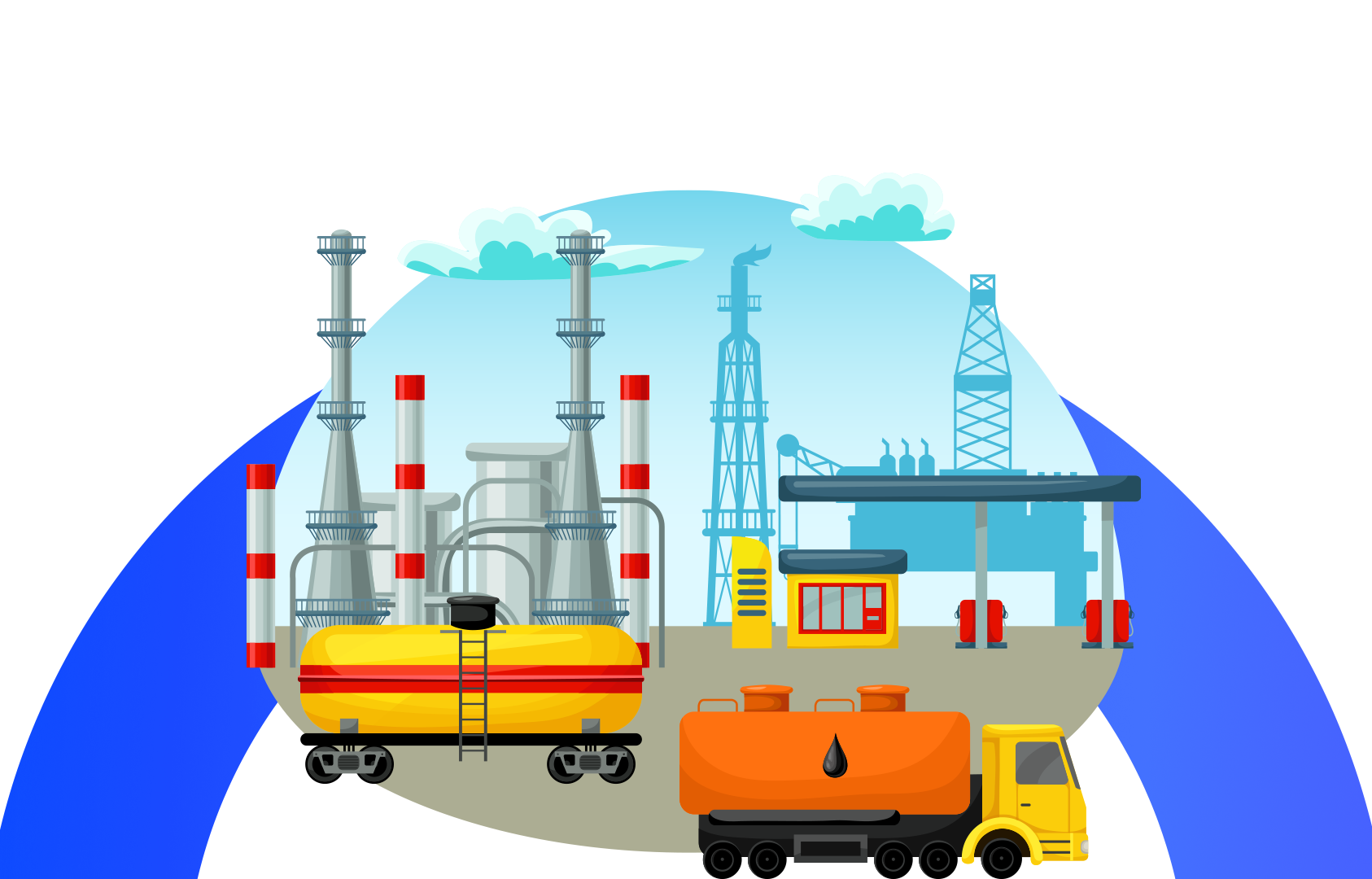The oil and gas industry faces turbulent times, with fluctuating crude oil prices driving uncertainty each day. Amidst this volatility, companies are increasingly turning to industrial IoT as the next evolution in the industry. The focus shifts towards enhancing operational efficiency and preserving existing infrastructure as businesses strive to adapt and thrive in this dynamic environment.

Adding to these concerns the oil and gas companies, are increasing and more stringent environmental regulations policies that become tougher by the day. With accidents becoming more expensive, even the smaller ones now have a greater impact on the company’s future.
Consequently, the industry is swiftly adjusting to these emerging realities. Transformation is underway in field installations, corporate offices, and throughout the entire oil and gas value chain, driven by the advent of the IoT.
What is industrial IoT?
The industrial IoT, also known as IIoT, entails the collection of data within manufacturing facilities through interconnected devices and sensors. Through IIoT, productivity is enhanced, output maximized, and maintenance predicted simply by monitoring production data.
The role of IIoT in the oil, gas, and energy sector.
In the current industrial landscape, oil and gas companies must regard data with the same importance as they do hydrocarbons. Data must be generated, communicated, stored, and processed effectively. By developing an integrated IoT strategy, companies unlock significant value and drive business transformation.
The applications of IoT in the oil and gas sector are vast. In the upstream industry, where non-productive time (NPT) results in substantial financial losses annually, IoT plays a pivotal role in reducing NPT events by leveraging real-time data for predictive maintenance scheduling. Integrating reservoir data with real-time field data enables efficient well placement and optimization of flow rates, thereby preventing accidents and optimizing processes.
7 ways in which IoT is revolutionizing the Oil and Gas industry:
Applications of industrial IoT in the oil and gas industry are vast. Let’s take a look at some of these here.
- Improved operational efficiency
IoT technology offers the potential to operate within a consistently cost-effective environment, addressing the increasing pressure to enhance sustainability and minimize environmental impact. Oil and gas companies are improving operational efficiency with innovative strategies to stay competitive in an unpredictable business climate. Surviving in this tough environment demands evaluating operations and integrating advanced IoT sensors to address oil and gas challenges effectively. Industrial IoT technology, such as OEEfficienci, enables plants to enhance their OEE, all the while streamlining processes and making data-driven decisions, helping companies reduce maintenance costs, optimize water lifecycle management, and schedule site visits with proper planning.
- Optimize inventory levels based on actual usage
Through the use of IoT sensors, oil and gas facility managers monitor their inventories, offering a faster, simpler, and more efficient method to manage large petroleum stocks. Additionally, through the integration of intelligent IoT solutions, managers can establish priorities and thresholds. Upon exceeding these thresholds, instant notifications alert them, prompting specific actions to be taken. This capability can be executed seamlessly even during ongoing processes, making the use of IIoT solutions incredibly advantageous for overall industrial automation.
OmniConnect™ cloud data management platform is one such industry automation tool that takes oil, gas & energy facilities towards digitalization. The integration of IoT sensors, enables factory manager to keep a real-time check on their operations.
- Improve stockroom management
Deploying sensors and devices for industrial operations enables companies to gather insightful data, maximizing business benefits. The proliferation of sensor-equipped machines provides online analysis, potentially reducing O&G companies’ capital costs by 20%. By collecting data from sensors and smart assets, O&G companies enhance reliability, and efficiency, and create new value.
- ROI/Revenue
Considerable investment has been directed into the oil and gas sector in recent decades, yielding improved outputs and enhanced productivity. IoT sensors deployed within drilling rigs continuously transmit vital information, enabling manufacturers to optimize rig operations. Additionally, pipeline sensors monitor pressure levels and can activate continuous or emergency shutdown measures when necessary. These advancements underscore the significant expansion of IoT technology within the oil and gas industry, leading to heightened ROI and revenue
- Real-Time Monitoring
Offshore oil and gas O&G production are inherently more complex and hazardous. The distance and isolation of offshore platforms pose significant challenges for O&G companies in obtaining up-to-date and accurate insights into ongoing production. Consequently, operators often lack awareness of specific machine and process variables, risking asset failure and costly downtime. Moreover, inadequate monitoring capabilities can lead to catastrophic explosions, causing environmental damage, endangering lives, and undermining companies’ credibility.
Fortunately, the industrial IoT and next-generation connectivity offer reliable and efficient offshore monitoring solutions. Leveraging sensor devices and smart connectivity, these technologies enable real-time monitoring, empowering managers to make prompt and informed decisions.
- Removing Manual Measuring Processes
In our recent case study, some digitization applications offer an advanced monitoring system, reducing manual labor and errors through automated processes using IoT. This involves using automated machinery for drilling, inspection, and maintenance in high-risk offshore or remote sites. These machines can autonomously control and share data, often transmitting crucial information to a central control center in a different country, enabling remote management of operations. However, this process may require sufficient bandwidth and possibly edge computing to ensure the transmission of vital data efficiently.
- Reduce Safety Risk
Ensuring the safety of workers in the oil and gas industry is paramount. Incorporating sensing technologies like industrial IoT represents a significant step towards enhancing worker safety, requiring a concerted effort from organizations. The adoption of IoT-based tools and solutions can revolutionize operations within the O&G sector, particularly in disaster-prone regions, by enabling remote monitoring. This proactive approach aids in identifying potential challenges well in advance of their occurrence, thereby reducing safety risks and introducing advanced measures to mitigate critical issues that may impact workers’ health.
What’s next for industrial IoT in oil, gas, and energy?
IoT represents the next phase in the evolution of the oil and gas industry. Real-time and seamless data flow from the fields to the boardrooms will become essential. This integration will facilitate improved decision-making, process optimization, and a safer work environment. In an industry where trillions of dollars are spent annually on exploration, development, and asset maintenance, even a single-digit percentage improvement through IoT will yield significant impacts. Octopus Digital’s cloud-based solutions provide a tailored approach to the oil, gas, and energy industry, ensuring optimized processes and informed decision-making.




